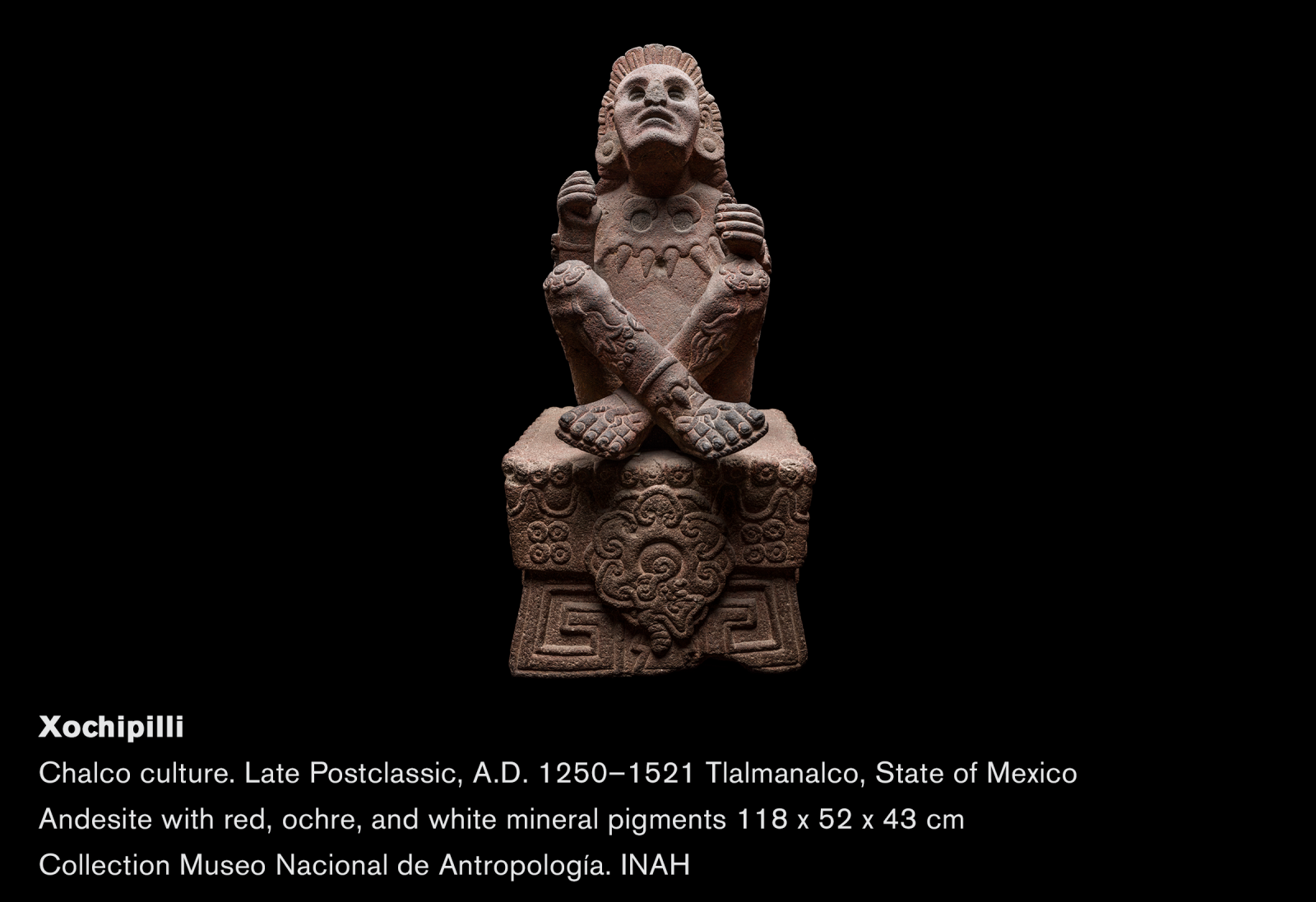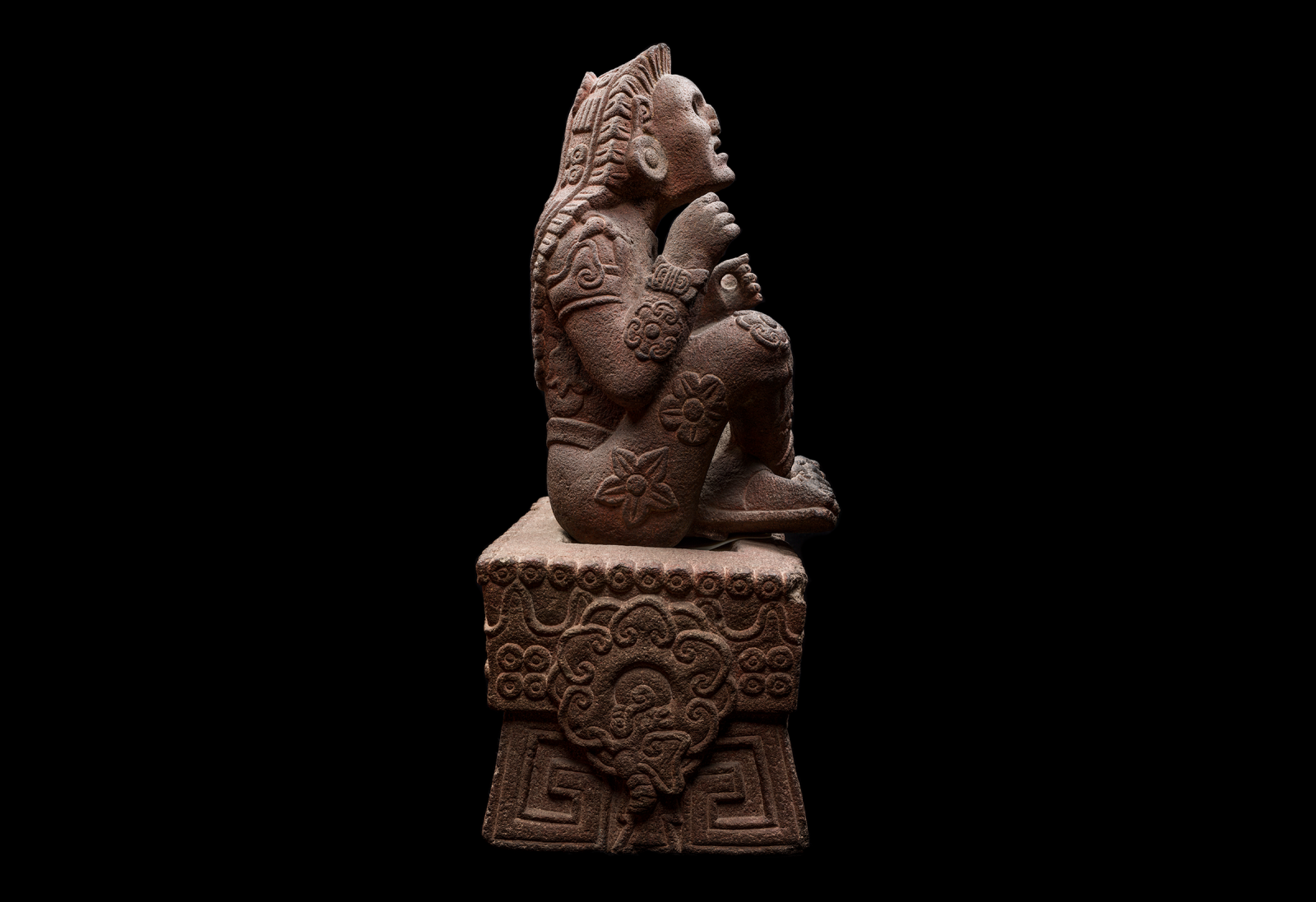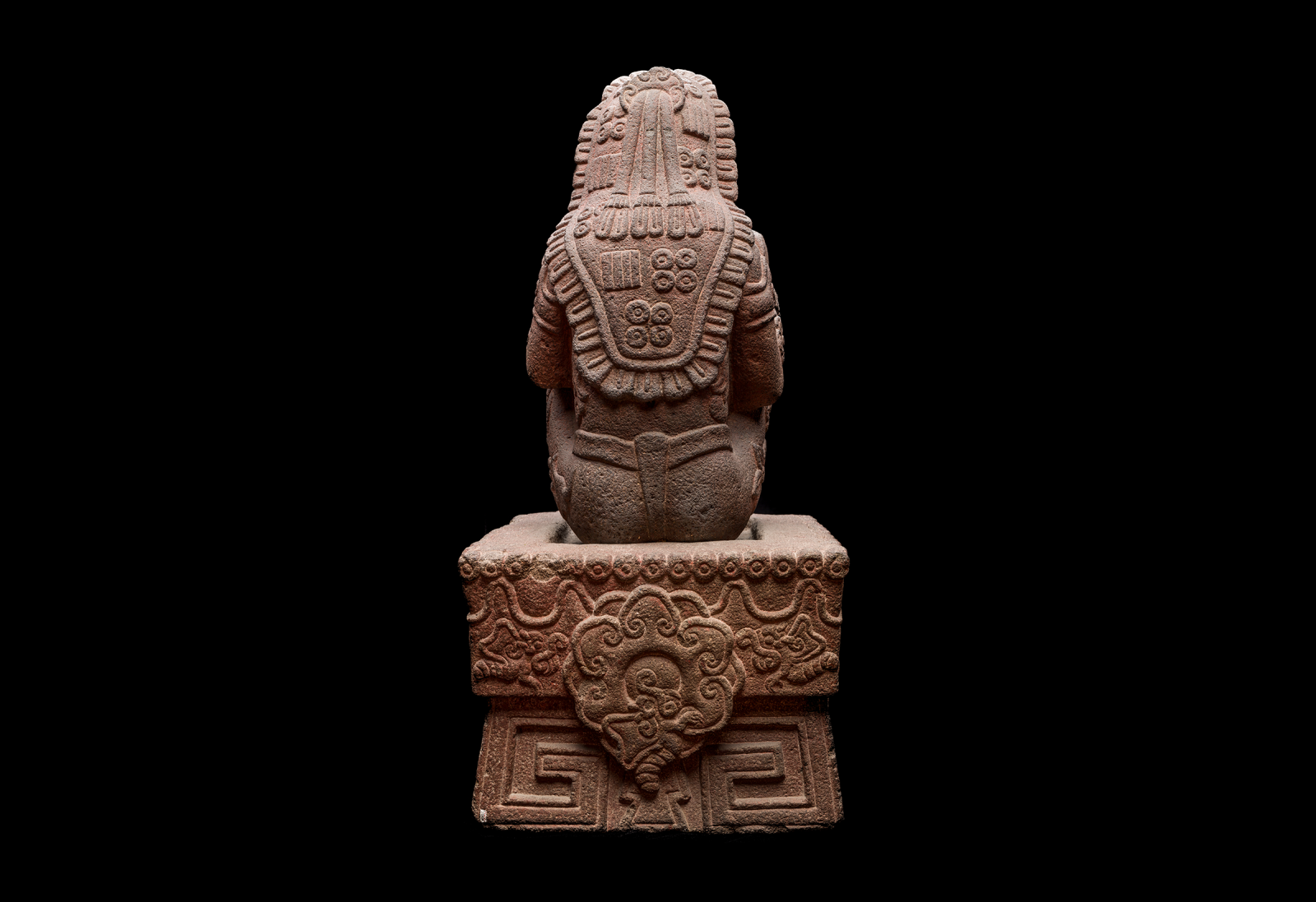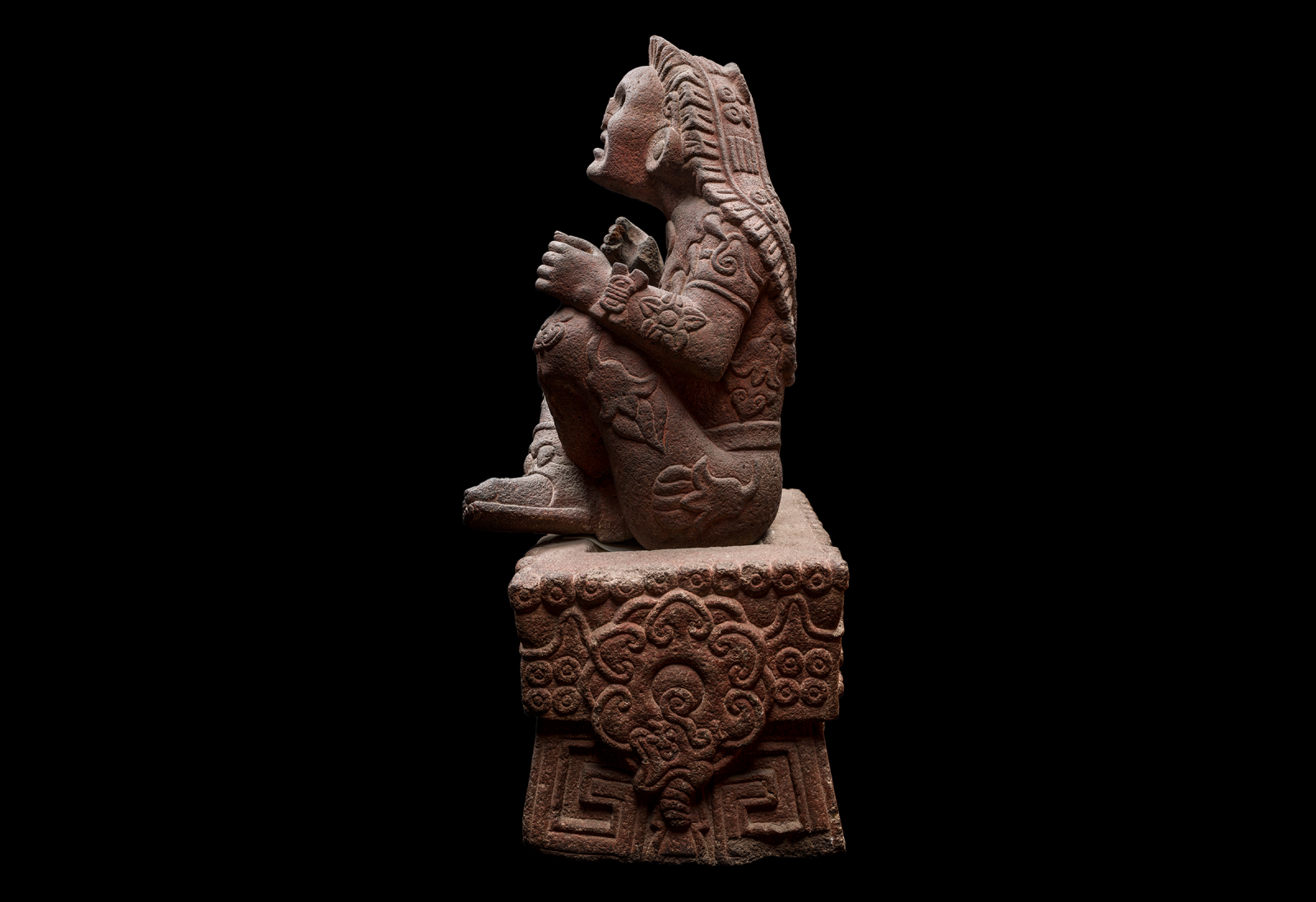
As the third installment in the series One Piece, One Culture, the masterpiece Xochipilli, Lord of Flowers, is presented as an exquisitely carved sculpture emblematic of Mexica art. It is introduced to speak for itself on the richness, beauty, complexity, and diversity of the inhabitants of the Basin of Mexico and the multitude of peoples who constructed Mexica glory.
Xochipilli belongs to the sculptural tradition of Chalco, a town southeast of the Basin of Mexico, and dates to the Late Postclassic (A.D. 1250–1521).
The sculpture is carved from andesite, a volcanic rock extremely abundant on the slopes of Mount Iztaccihuatl, the area where it was excavated in the nineteenth century, near Tlalmanalco, today in the State of Mexico. The piece had been registered as part of the collection of the National Museum of Anthropology since 1882, when it appears for the first time in the catalogues of the former National Museum, after it had been donated by Alfredo Chavero.
The piece was worked in the Chalco region, a particularly fertile region where Xochipilli was honored with special reverence as the deity responsible for the fertility of plants and flowers. Chalco was also renowned for its longstanding sculptural and artistic tradition, here translated into the characteristic features that give the deity with its symbolic and aesthetic character, as well as its beauty. Observing each of its details allows you to discover not only ideas related to Xochipilli as a deity, but also the system of beliefs in the vast, diversified, and complex Mexica universe.



